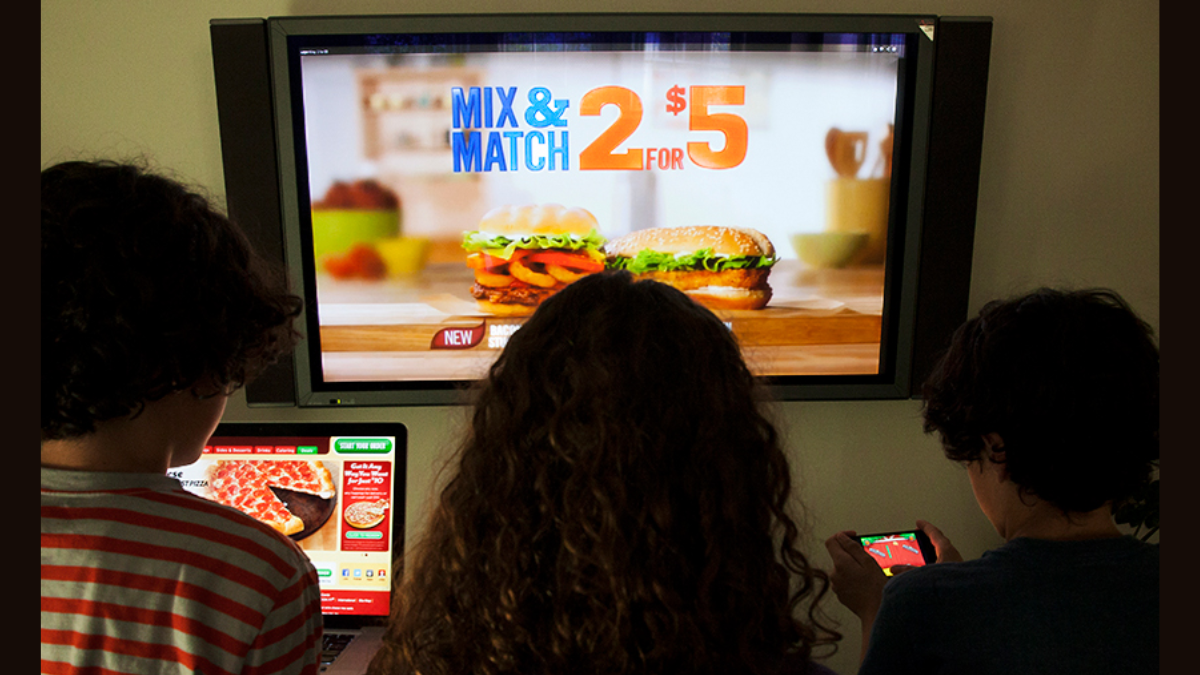
In a world saturated with fast-paced advertising and digital content, a new study has raised serious concerns about the impact of junk food marketing on children’s eating habits. Researchers have found that even a brief, five-minute exposure to advertisements promoting foods high in fat, sugar, and salt (HFSS) can lead children to consume significantly more calories in a single day. The study’s findings present a stark reminder of how vulnerable young minds are to media influence, and it calls for urgent reforms in food marketing practices targeting minors.
Table of Content:-
Five Minutes That Can Shape a Day’s Diet
Conducted among 240 children aged 7 to 15 years, the study was a randomised crossover trial presented at the European Congress on Obesity (ECO) in Malaga, Spain. Researchers discovered that just five minutes of HFSS food advertising—regardless of whether it was through television, online platforms, or other media—could cause children to eat an average of 130 extra kilocalories that day. To put that into perspective, this is roughly equivalent to two slices of white bread.

What makes this alarming is that the increased calorie intake wasn’t confined to just snacks. The data revealed that children consumed approximately 58.4 additional kilocalories from snacks and another 72.5 kilocalories during lunch, after being exposed to junk food advertisements. These numbers reflect a significant behavioural shift triggered by a minimal amount of media exposure.
Also Read: Can’t Stop Craving Chips? Aldosterone Imbalance Might Be to Blame
Why Are Kids So Susceptible?
Professor Emma Boyland from the University of Liverpool, who led the study, explained that children and teenagers are particularly vulnerable to advertising cues. Their brains are still developing, and they tend to respond more impulsively to marketing messages. “Even short exposure to the marketing of foods high in fat, salt, and sugar can drive excess calorie consumption and potentially weight gain,” said Boyland. She stressed that such behaviours could have long-term consequences, particularly as eating patterns formed during childhood often carry through into adulthood.

Health Consequences Loom Large
The implications of this increased calorie intake are not trivial. Sustained over time, an extra 130 calories a day can significantly contribute to unhealthy weight gain, eventually leading to conditions like obesity, type 2 diabetes, high blood pressure, and even certain types of cancer. In adolescents, whose bodies are still developing, this can set the stage for lifelong health struggles.
The study suggests that it is not just frequent or prolonged exposure to junk food advertising that matters—even a short viewing window can have measurable effects. This challenges the assumption that occasional exposure is harmless and underscores the need for comprehensive protections for children.

A Call for Policy Reform
This research adds to the growing evidence that links aggressive marketing of unhealthy food to the global childhood obesity epidemic. Experts believe these findings should prompt urgent policy interventions aimed at restricting junk food advertising to young audiences. These could include bans during children’s programming hours, restrictions on digital ads, and clearer guidelines around influencer marketing and in-app promotions that appeal to minors.
Also Read: Cancer-Linked Chemicals Detected In Widely Used Skincare and Makeup Products: Study
According to the research team, designing such restrictive food marketing policies could play a pivotal role in protecting children’s health and curbing rising obesity rates. “Our findings offer crucial novel information on the extent, nature, and impact of unhealthy food marketing via different types of media on young people’s eating behaviour,” said Boyland.
Bottomline
The study reinforces a sobering truth: the fight against childhood obesity and poor dietary habits cannot be won without addressing the marketing forces that shape children’s food choices. With digital platforms becoming an ever-present part of children’s lives, the need for strict regulation of food advertising has never been more urgent. In a matter of minutes, marketers can influence eating behavior. It’s time public health policy catches up.
How we keep this article up to date:
We work with experts and keep a close eye on the latest in health and wellness. Whenever there is a new research or helpful information, we update our articles with accurate and useful advice.
Current Version
